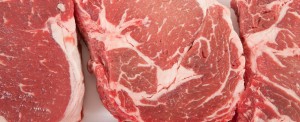Reality Behind 100 Percent Beef Claims
Fast food restaurants have taken a beating regarding what exactly is in their all beef hamburger patties and ground beef taco filling. They claim using nothing but 100 percent beef. Here’s the reality behind 100 percent beef claims.
Like many marketing terms used to sell products, 100 percent beef is meaningless like the words natural or all natural. There are no state of federal regulations or standards defining the meaning of natural. It is totally meaningless and in the mind of the beholder.
Some consumers believe products labeled natural are minimally processed and pesticide and herbicide free. It is easy confusing the term natural with organic. If you grow your own fruits and vegetables you probably use little or no herbicides or pesticides. You’d consider that natural since almost all herbicides and pesticides are manmade.
Producers selling organic produce must meet strict federal regulations to label and market their products as cerified organic, but even those regulations are slowly being eroded by Congress to appease generous multinational corporations wanting to jump on the organic bandwagon with less than 100 percent organic products. While there are requirements for organic products, anyone can label anything as being natural and they do.
To date, no one has produce tasty, economically viable, readily available synthetic beef, chicken, pork or seafood. All beef, chicken, pork and seafood is natural. Period! Supposedly, there is a five legged cow which is unusual, but still natural. Some animals have even been cloned, but it requires a fertilized egg. Cloned animals are not synthetic animals created using a computer.
So why is the 100 percent beef claim deceptive? Because beef and other meat products are like wine. There are two types of wine; varietal and blended.
Varietal wines are made from one type of grape like chardonnay or zinfandel. Blended wines are produced using a variety of grapes. This can produce a more consistent wine from season to season.
The same is true of beef, pork, chicken and fish. When you buy a whole or cut up chicken you know your are getting chicken. Buy a steak or roast and you know you are getting a rib eye, beef tenderloin, chuck, flank or sirloin. Pork is should the same way.
But buy ground beef or pork and it can be come from any park of the animal unless the product is clearly labeled as ground chuck, sirloin, or some other cut. It is like having a butcher grind a steak or roast for you. You expect the ground meat returned to you is the same cut you gave to the butcher.
Most ground beef is sold buy fat and lean content, not the cut of beef. If the butcher throws in beef tongue it’s still 100 percent beef. Tongue used to be a popular, inexpensive piece of beef. I recall eating tongue as a child. You’ll be hard pressed finding tongue at your supermarket. Ethnic markets may still carry it.
Unspecified ground beef can come from any part of the cow.
Consumers are lead to believe 100 percent beef or all beef means hamburger patties or taco filling made from a particular cut of beef and without fillers or additives. But if that were the case, why don’t restaurants state that fact? It’s same as the Angus beef myth. You are lead to believe you are buying a higher quality product for a lower price than you can make a home.
Producing and selling hamburgers and tacos for as little as one dollar isn’t possible using chuck or sirloin. The food costs of a fast food meal or restaurant meal is between 25 and 30 percent of the total cost. A $5 dollar hamburger has about $1 dollar worth of food. Assume a 4-ounce hamburger patty. One pound of ground beef ranges between $4 to $7 per pound depending on the cut of beef and amount of fat. A 4-ounce patty costs between $1 to $1.75 at retail prices. To get the patty price down to 25 to 50 cents means using lower quality beef with fillers. The filler is 100 percent beef but you probably don’t want to know what parts of the cattle the beef filler comes from.
It all comes down to you get what you pay for. The film Food, Inc takes you behind the scenes of the United States food industry. I highly recommend watching this film.




